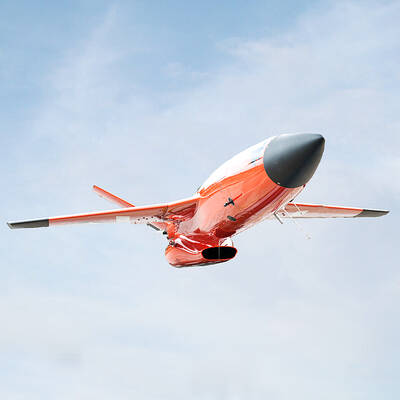Workers were close to restoring power to a nuclear plant’s overheating reactors yesterday as the toll of dead or missing from Japan’s worst natural disaster in nearly a century neared 21,000.
Amid the devastation on the northeast coast left by the March 11 earthquake and tsunami, police reported an astonishing tale of survival with the discovery of an 80-year-old woman and her 16-year-old grandson alive under the rubble.
“Their temperatures were quite low, but they were conscious. Details of their condition are not immediately known. They have been already rescued and sent to hospital,” a spokesman for the Ishinomaki Police Department said.
They were in the kitchen when their house collapsed, but the teenager was able to reach food from the refrigerator, helping them survive for nine days, broadcaster NHK quoted rescuers as saying.
However, with half a million tsunami survivors huddled in threadbare, chilly shelters and the threat of disaster at the Fukushima Dai-ichi nuclear plant stretching frayed nerves, the mood in the world’s third-biggest economy remained grim.
The discovery of traces of radioactive iodine in Tokyo tap water, well to the southwest of the crippled atomic power plant on the Pacific coast, compounded public anxiety, but authorities said there was no danger to health.
The Fukushima Dai-ichi plant was struck on March 11 by a massive earthquake and tsunami which, with 8,199 people confirmed killed, is Japan’s deadliest natural disaster since the Great Kanto quake leveled much of Tokyo in 1923.
Another 12,722 are missing, feared swept out to sea by the 10m tsunami or buried in the wreckage of buildings. In Miyagi Prefecture on the northeast coast, where the tsunami reduced entire towns to splintered matchwood, the official death toll stood at 4,882.
However, Miyagi police chief Naoto Takeuchi told a task force meeting that his prefecture alone “will need to secure facilities to keep the bodies of more than 15,000 people,” Jiji Press reported.
Cooling systems that are meant to protect the Fukushima Dai-ichi plant’s six reactors from a potentially disastrous meltdown were knocked out by the tsunami, and engineers have since been battling to control rising temperatures.
The radiation-suited crews were striving to restore electricity to the aging facility 250km northeast of Tokyo, after extending a high-voltage cable into the site from the national grid.
A spokesman for Japan’s nuclear safety agency said electricity had apparently reached the power distributor at reactor 2, which in turn would feed power to reactor 1.
Plant operator Tokyo Electric Power Co (TEPCO) confirmed an electricity supply had been restored to the distributor, but said power at the reactor unit was not back on yet.
Engineers were checking the cooling and other systems at the reactor, aiming to restore power soon, TEPCO said late yesterday.
“It will take more time. It’s not clear when we can try to restore the systems,” spokesman Naohiro Omura said.
Fire engines earlier aimed their water jets at the reactors and fuel rod pools, where overheating is an equal concern, dumping thousands of tonnes of seawater from the Pacific Ocean.
Six workers at the Fukushima Dai-ichi plant have been exposed to high levels of radiation, but are continuing to work and have suffered no health problems, TEPCO said.

The US government has signed defense cooperation agreements with Japan and the Philippines to boost the deterrence capabilities of countries in the first island chain, a report by the National Security Bureau (NSB) showed. The main countries on the first island chain include the two nations and Taiwan. The bureau is to present the report at a meeting of the legislature’s Foreign Affairs and National Defense Committee tomorrow. The US military has deployed Typhon missile systems to Japan’s Yamaguchi Prefecture and Zambales province in the Philippines during their joint military exercises. It has also installed NMESIS anti-ship systems in Japan’s Okinawa

‘WIN-WIN’: The Philippines, and central and eastern European countries are important potential drone cooperation partners, Minister of Foreign Affairs Lin Chia-lung said Minister of Foreign Affairs Lin Chia-lung (林佳龍) in an interview published yesterday confirmed that there are joint ventures between Taiwan and Poland in the drone industry. Lin made the remark in an exclusive interview with the Chinese-language Liberty Times (the Taipei Times’ sister paper). The government-backed Taiwan Excellence Drone International Business Opportunities Alliance and the Polish Chamber of Unmanned Systems on Wednesday last week signed a memorandum of understanding in Poland to develop a “non-China” supply chain for drones and work together on key technologies. Asked if Taiwan prioritized Poland among central and eastern European countries in drone collaboration, Lin

The Chien Feng IV (勁蜂, Mighty Hornet) loitering munition is on track to enter flight tests next month in connection with potential adoption by Taiwanese and US armed forces, a government source said yesterday. The kamikaze drone, which boasts a range of 1,000km, debuted at the Taipei Aerospace and Defense Technology Exhibition in September, the official said on condition of anonymity. The Chungshan Institute of Science and Technology and US-based Kratos Defense jointly developed the platform by leveraging the engine and airframe of the latter’s MQM-178 Firejet target drone, they said. The uncrewed aerial vehicle is designed to utilize an artificial intelligence computer

Renewed border fighting between Thailand and Cambodia showed no signs of abating yesterday, leaving hundreds of thousands of displaced people in both countries living in strained conditions as more flooded into temporary shelters. Reporters on the Thai side of the border heard sounds of outgoing, indirect fire yesterday. About 400,000 people have been evacuated from affected areas in Thailand and about 700 schools closed while fighting was ongoing in four border provinces, said Thai Rear Admiral Surasant Kongsiri, a spokesman for the military. Cambodia evacuated more than 127,000 villagers and closed hundreds of schools, the Thai Ministry of Defense said. Thailand’s military announced that